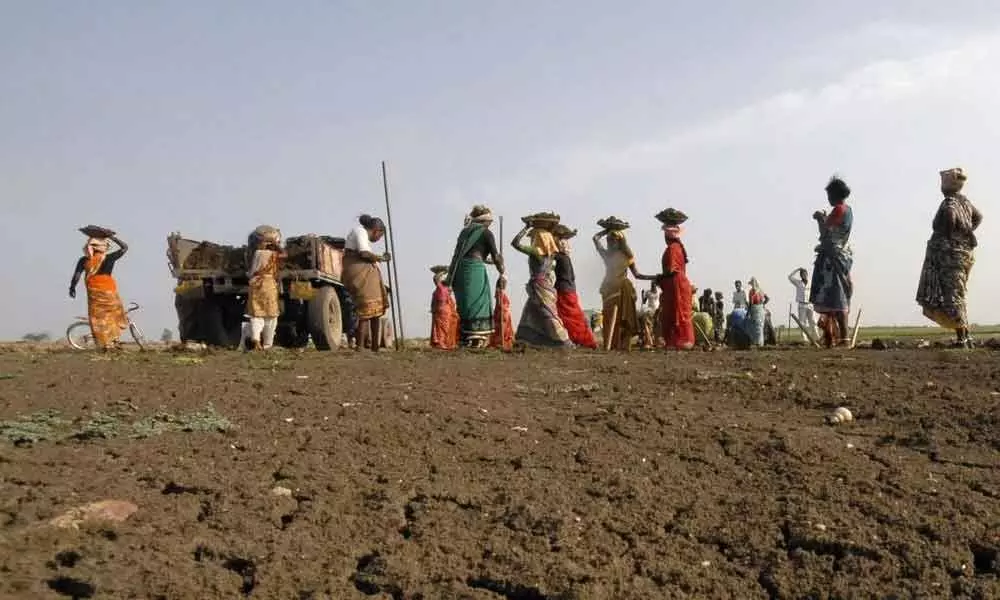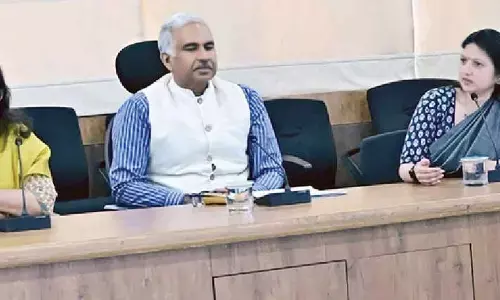Challenges for the coming decade

This year is the interregnum between the decades of the tens and twenties.
This year is the interregnum between the decades of the tens and twenties. The policies put in place this year will determine the trajectory of the coming decade.
The two main challenges of the coming decade will be robots and Artificial Intelligence (AI) and climate change. Most manufacturing works will be done by robots and the number of jobs in this sector will see a huge decline at the global level.
The works presently being done by the intellect such as medical diagnosis, determining the crop to be sown, finding case law related to a particular court case, etc will be increasingly done by computers using AI programmes.
AI will analyse many medical reports such as from pathology, radiology, cardiology, etcetera and give its prognosis. The doctor will only say yes or suggest an alternative.
The doctor will not have to study all the medical reports. Thus, one doctor will be able to treat more numbers of patients — and better — in the same time.
The adverse impact of these technologies on employment can be combatted in two ways. One approach is for us to start making the cutting-edge technologies of robots and AI programmes and supply these to the whole world so that a number of jobs can be created in our country in the production of these job-eating technologies.
We will be able to earn huge amounts through exports of these products and use that income to provide roti, kapada aur makaan to our people. The second approach is to capitalise on the increased use of smartphone that is taking place simultaneously.
Today a number of businesspersons do their entire business on the smartphone. For example, they undertake trading on the share markets, provide online education and tutorials, make translation of books from Japanese to German language; make apps, make movies, design clothes, etc on smartphones.
These and many other services can be provided by the smartphone. Large number of jobs can be created in this area.
For example, the government can launch an ambitious scheme to provide online education to students in Africa at a nominal cost which can be outsourced to smartphone users in India.
Then exams can be held, and degrees can be provided from Indian online universities. Both the above approaches to combatting the adverse impact of robots and AI are anchored on higher education.
Today, most students go to college not to learn about the subject but to get a certificate that enables them to get a government job. The problem is rooted in the structure of our higher education system.
The services of the teachers are protected. There is no punishment if the teacher does not teach properly. Accountability is virtually non-existent. The same teacher provides good quality education in the tutorial classes.
But the tutorial classes do not provide laboratories and field experience. Moreover, more often than not, the objective of the students and teachers in the tutorial classes is to get selected in government jobs.
The students learn how to "crack" the selection procedures rather than to learn about the subject. The entire educational system has become focused on "packaging" rather than on the content.
This is often helpful for the students to get government jobs, but the lack of knowledge prevents them from providing online services like tutorials to African students or translation of books from Japanese to German language.
The need is to provide education vouchers to the students instead of providing secured salaries to the professors. The students can then take admission in a college of their choice.
There is also a need to publicise the few numbers of government jobs being created; and that the future lies in obtaining job-creating knowledge rather than mere certificates.
The need is to make the government-funded higher education system accountable. It must be made compulsory for all colleges and universities to earn, say, one-half, of their budget through "self-financing" courses.
The assured budget allocated by the government should be cut by, say, 25 percent every year, and the amount saved may be given to the students seeking higher education in form of vouchers.
The student can pay the fees of the self-financing courses with these vouchers. The government money will be reaching the same teachers, but it will reach not directly as assured salaries, but as income from vouchers deposited by students.
That will lead to an improvement in the quality of higher education imparted by our government system and enable our youth the grasp the immense opportunities arising in the production of AI and the provision of online services.
The second challenge of the coming decade is climate change. Let us think of the consequences of the Ganga Sagar Island getting submerged in the Bay of Bengal due to the rise in sea level due to global warming; or a huge increase in diseases due to increased exposure to harmful rays from the sun; or a reduction in agriculture production due to crops being affected by new unknown diseases.
Millions will be displaced from low-lying areas; and other millions will become sick and unable to work. We will have to provide roti, kapada aur makaan to these people. However, the welfare bureaucracy eats up a good share of the relief money in administrative costs.
Further, the government schemes are made so as to incapacitate the people. The mid-day meal scheme, for example, has become a huge attraction for the youth to take admission in government schools where they are provided sub-standard education.
In other words, the mid-day meal is designed to ensure that the student does not get good education from a private school and remains entrapped in poverty.
The capacity of the government to make these welfare expenditures will also reduce in the coming decade. The government will progressively collect less taxes due to reduction in employment and reduction in demand in the market as we are seeing in the stagnation in GST collections.
The government will face increased demand for welfare expenditures and, at the same time, have lesser collection of revenues due to reduction in employment courtesy robots and AI.
One solution to this problem is to dismantle the numbers of welfare schemes and provide the money saved to the people in form of direct transfers. The problem is global.
Such transfers are being called "helicopter money" in Western countries — as if a pack of bank notes is dropped by helicopter on your house.
We can provide roti, kapada aur makaan to our people if we accept this approach of helicopter money in the coming decade..
(The writer is formerly Professor of Economics at IIM, Bengaluru)













